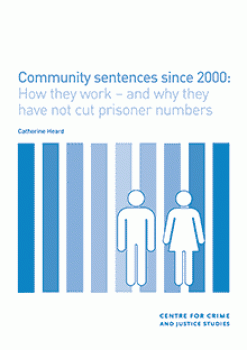Community sentences since 2000

This report is published under our Alternatives to Custody in Europe project, which takes a detailed look at alternatives across eight EU member states.
The report outlines the key policy developments since 2000 in our prison population and use of alternatives, in all three UK jurisdictions. It covers:
| • | The increasing role of the private sector. |
| • | The growth of electronic monitoring. |
| • | The growing punitiveness of community sentences. |
| • | The confused and conflicting policy messages around ‘punishment’ and ‘rehabilitation’. |
In the report we also present a set of suggested core principles for the better use of alternatives to custody, to inform and underpin the policy and approach of governments and criminal justice agencies.
Detailed annexes to the report explain how the key alternative measures work (with a particular focus on probation) and look at evidence of their impact across all stages of the justice process: pre-trial, at sentencing decisions and after release through measures such as home detention curfew. A wealth of statistical data is provided, on prisoner numbers, bail, remand, uses and types of community sentences, suspended sentences, probation and other alternatives to custody. The data covers England and Wales, Northern Ireland and Scotland, extending from 2000 to 2014 wherever possible.
This report should be of value to people working in probation or those thinking of entering the profession, as well as to anyone wishing to gain an understanding of the various measures that the UK's criminal justice systems provide by way of alternatives to custody, and their impact.